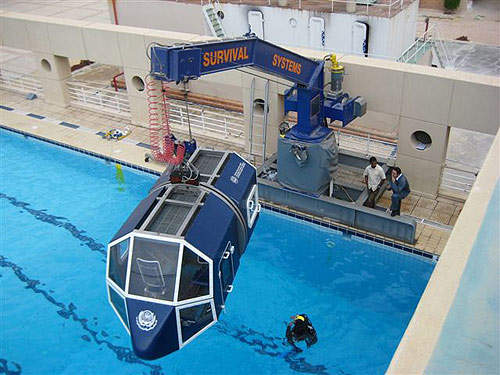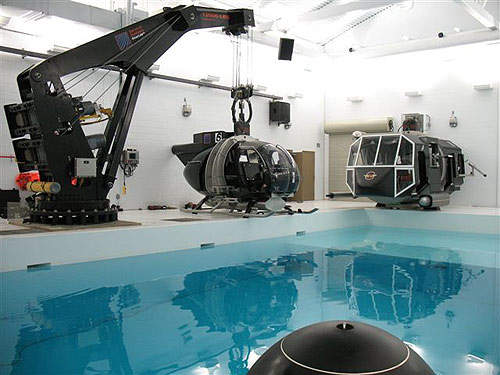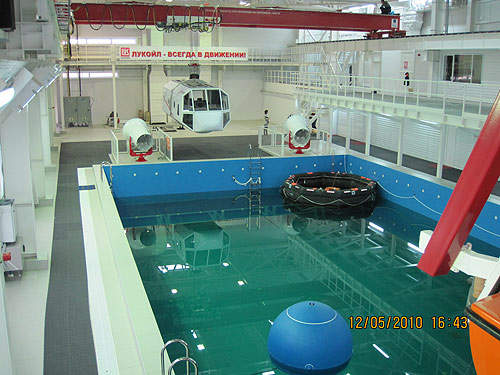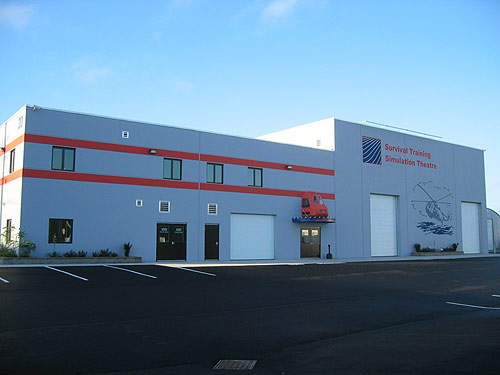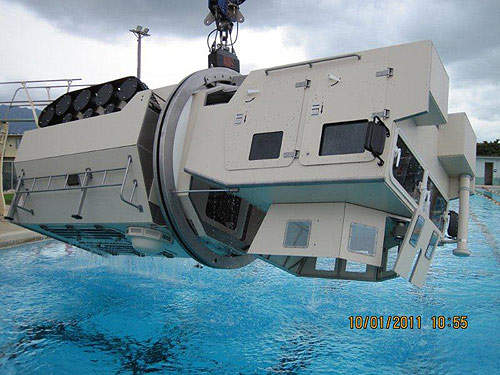Survival Systems was founded in 1982 and has become the world leader in supplying high fidelity emergency egress simulation devices and associated safety survival training programs for the military, offshore, marine, aviation and industrial sectors.
Training device for underwater emergency egress
The company’s ultimate goal has been to design, develop and continue advancements of the Modular Egress Training Simulator (METS™) – a state-of-the-art training device used for underwater emergency egress. The first METS was introduced in 1987 and, to date, more than 80 METS have been manufactured and distributed for use in 26 countries.
Modular egress training simulator
METS are used worldwide on a daily basis to train military crew members and civilian personnel in aircraft ditching and underwater egress training. METS devices are capable of being configured to replicate various aircraft.
Ditching training programs were originally developed for civilian offshore oil companies and, shortly afterwards, for military personnel. The offshore oil industry insisted on a training syllabus centred on absolute safety for personnel, ease of training, and a very high course pass rate. Our sophisticated training syllabus, based on graduated steps until completion, has resulted in our unequalled course pass rates.
Safety survival training programs
Survival Systems markets training programs to military and civilian aircrew organizations, and offshore / marine clientele. It exports its simulation technologies and associated training programs in a packaged form to leading military and / or civilian organizations that wish to offer training in house to its own personnel or to the general public, on a commercial basis.
Emergency egress simulation devices
Survival Systems integrates realism into its training delivery through use of its technologies, including the METS (aircraft ditching), the Shallow Water Egress Trainer or SWET™ (familiarization aircraft ditching and emergency breathing system instruction), the Shallow Water Initial Memory Mechanical Exit Release or SWIMMER™ (procedural training device, used for practice under water to locate and operate exits), and the FirePan™ (firefighting). To support our military clientele, Survival Systems has developed simulators to replicate transport vehicles – the HMMWV and AAV.
Personnel-lift rated jib crane and gantry hoists
Most recently, and in light of pending man-lift regulations related to lifting personnel, Survival Systems has designed, developed and delivered to the market a personnel-lift rated jib crane and two versions of gantry hoists – the Xross Gantry Hoist (XGH™) and the Twin Gantry Hoist (TGH™) for use in hoisting the METS during training operations.
Simulation training technology for the offshore industry
All of these training technologies are major components of the Survival Training Simulation Theatre (STST™). The STST combines wind, waves, rain, rescue hoist, and surround-sound effects to the underwater escape training experience to maximize reality. This state-of-the-art, high fidelity training experience is currently being used by both military and civilian training centers around the world.
Quality assured offshore simulator training devices
Survival Systems’ training programs meet the majority of international industry requirements. The METS meets the standards of the Conformité Européenne Mark in accordance with European Community standards. Survival Systems’ TGH and METS have been certified by Det Norske Veritas (DNV) as rated for the lifting of persons.
In Canada alone, Survival Systems’ training programs have been recognized for directly contributing to the survival of 16 aircrew.
About Survival Systems
Albert Bohemier (CEO) founded Survival Systems Limited (SSL) in 1982 in Dartmouth, Nova Scotia, Canada.
The business definition or purpose of Survival Systems is to enhance and preserve workers’ lives through safety education, training technologies, and applied research and development.
The company’s strategic intent is to create, set and maintain the standard or measurement by which all workers who may have to react, escape, egress, effect a rescue, or survive a life-threatening situation over water, air, or land will be trained.


